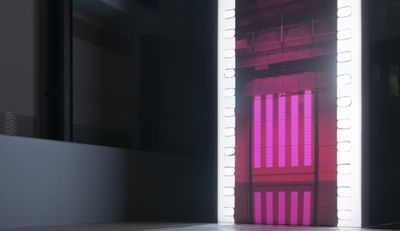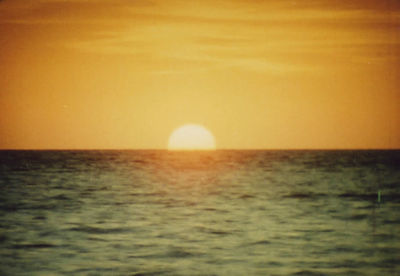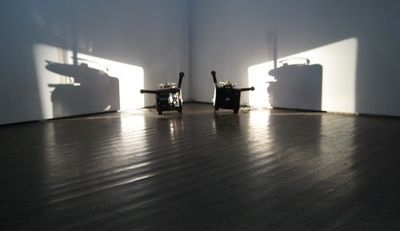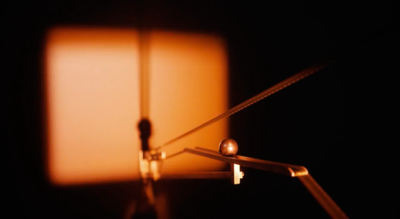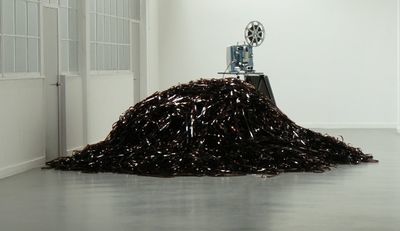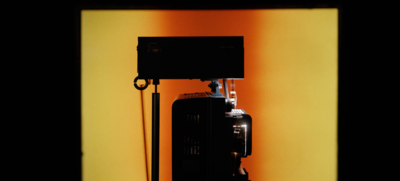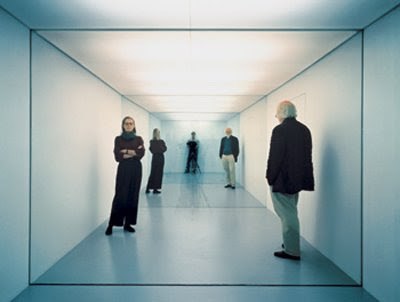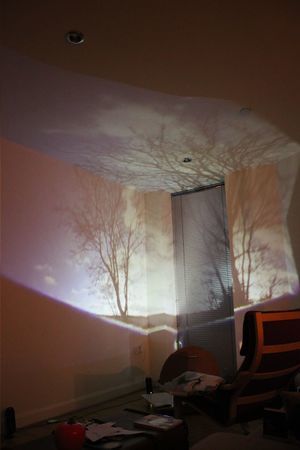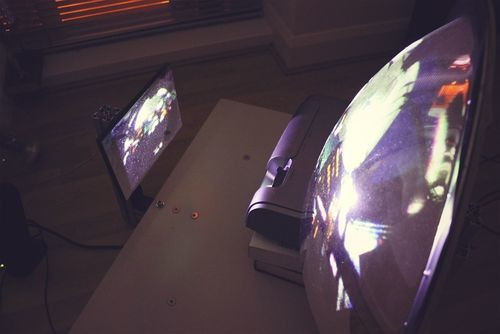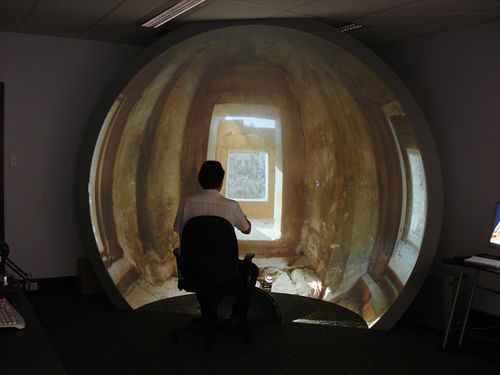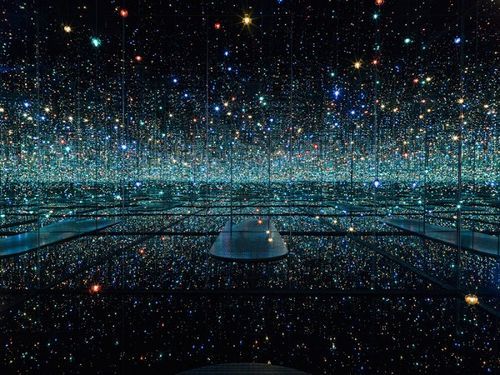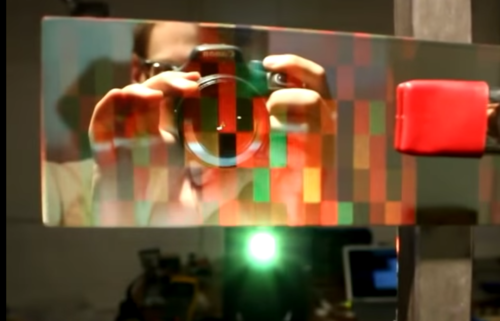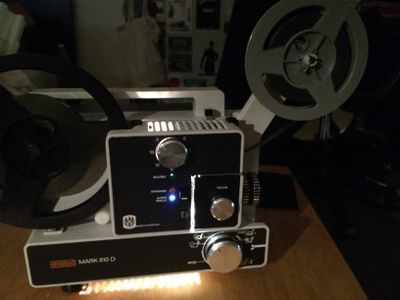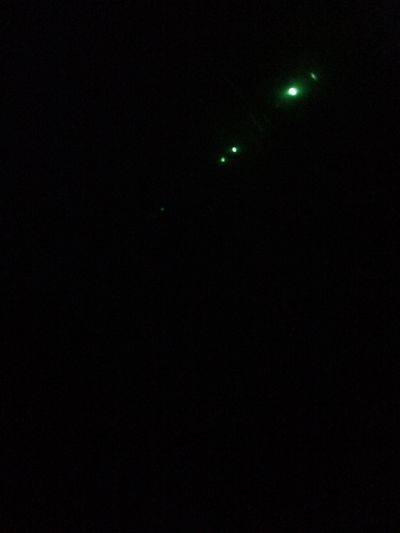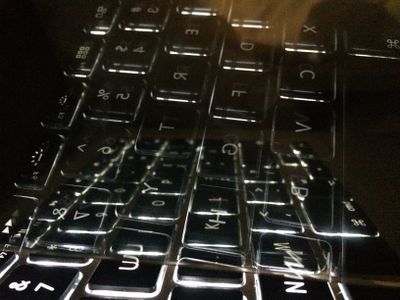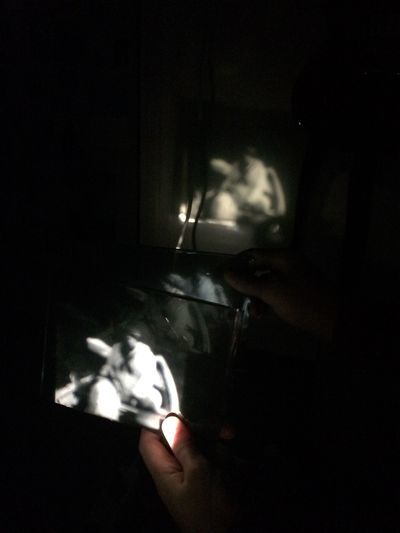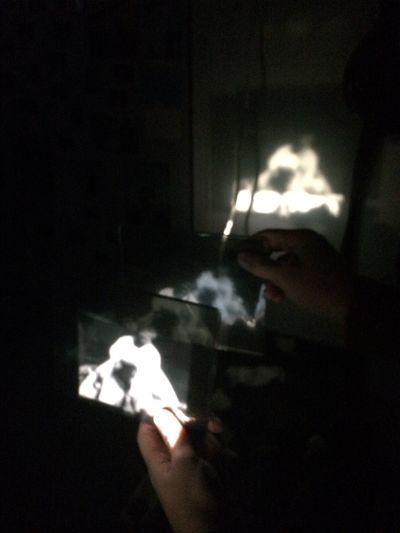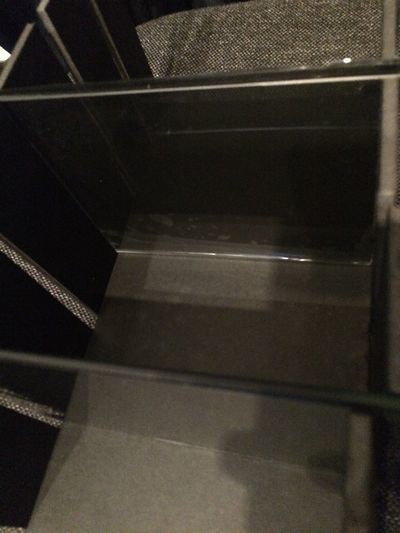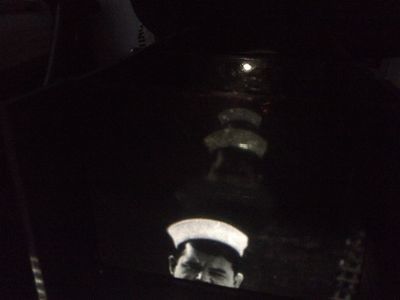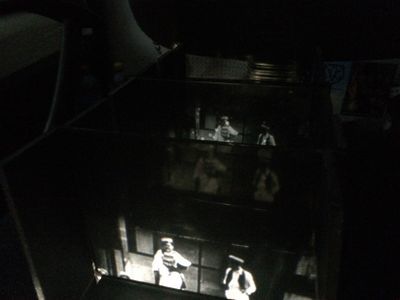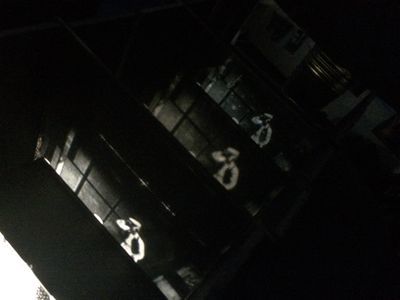Difference between revisions of "Final Project"
LarsNoback (talk | contribs) |
LarsNoback (talk | contribs) (→Idea) |
||
| (17 intermediate revisions by the same user not shown) | |||
| Line 1: | Line 1: | ||
| − | = | + | =PROJECT PLAN= |
| + | ==Starting Point== | ||
| + | |||
| + | |||
| + | I started out with two contradicting interests. One is virtual reality and the other is analog film. | ||
| + | |||
| + | Analog film is a dying medium. It’s becoming more difficult to obtain or develop film. | ||
| + | |||
| + | On the other hand, virtual reality and 360º videos are becoming much more common. | ||
| + | |||
| + | Whenever I talk to people about virtual reality, they seem to think that it will replace the way we use screens in the future. To me, that sounds like a depressing future, for multiple reasons. But as a filmmaker I dislike this vision, because to me the technological developments of film are pretty much as far as they should go. Virtual reality isn’t a logical next step to me because it is so different that it becomes something else entirely; it’s a different medium. | ||
| + | |||
| + | The same can be said about digital and analog film. What if the two are two different media? They have a very obvious similarity, but in essence are completely different. Which makes it a shame knowing that today, digital film has almost completely replaced analog film. | ||
| + | Now that I have developed an interest in making analog films, I realize that it has become very difficult to find the tools to do this. | ||
| + | |||
| + | ==Concept== | ||
| + | |||
| + | -So what I’m looking for is an experience that is much more unique, something that combines analog film with the illusion of physical space from virtual reality. | ||
| + | |||
| + | - The essence of analog film. What analog film does is capture light into a physical object. Light can create the illusion of space or highlight the existence of real space. | ||
| + | |||
| + | -The use of analog film. Using analog film/projectors in your project, automatically makes your project be about this, just because of how rare and unorthodox it has become. | ||
| + | |||
| + | -The alternative to virtual reality. Virtual reality is still you looking at a screen. What if you can use light to create the illusion of space, without the use of digital devices. Something you can witness with your eyes, while still being able to walk around in the space. | ||
| + | |||
| + | |||
| + | ==Idea== | ||
| + | |||
| + | An installation where a Super 8 film is projected on two one-way mirrors. The projected image, of high contrast between dark and light, creates an optical illusion of the same image repeated in space. The viewer can walk around and in between the two mirrors, and experience light in physical space, without the use of any digital device. | ||
| + | |||
| + | |||
| + | [[file:Proj sketch.jpg|700px]] | ||
=REFERENCES= | =REFERENCES= | ||
| Line 78: | Line 109: | ||
[[file:twowayprojection.png|500px]] | [[file:twowayprojection.png|500px]] | ||
| + | |||
| + | https://www.youtube.com/watch?v=AEvrI6oMd10 | ||
==Developing 8mm== | ==Developing 8mm== | ||
| Line 93: | Line 126: | ||
http://www.ebay.ie/itm/331762095478§ | http://www.ebay.ie/itm/331762095478§ | ||
| + | |||
| + | What's also possible is using a projector that can play in slower frame-rates. A normal super 8 plays for 3,5 minutes, but slowing the speed can extend this time to about 20/25 minutes. | ||
| + | In the end I bought this projector that can play in 3, 6, 9, or 18 frames per second. | ||
| + | |||
| + | https://www.youtube.com/watch?v=OFLG6-xI1_U | ||
| + | |||
| + | [[file:Projector.JPG|400px]] | ||
| + | |||
| + | ==Camera== | ||
| + | |||
| + | http://www.jamesvanarsdale.com/links/canonsuper8/CanonAZ814Super8Manual.pdf | ||
=PROCESS= | =PROCESS= | ||
| + | ==Reflective window film== | ||
| + | |||
| + | I ordered two one-way mirrors, but in the meantime I used reflective window film on regular pieces of glass to achieve a similar effect. | ||
[[file:Mirror 1.JPG|400px]] | [[file:Mirror 1.JPG|400px]] | ||
| + | |||
[[file:Mirror2.JPG|400px]] | [[file:Mirror2.JPG|400px]] | ||
| + | |||
https://media.giphy.com/media/tPVPqmec8WQLu/giphy.gif | https://media.giphy.com/media/tPVPqmec8WQLu/giphy.gif | ||
| + | I was able to achieve some repetition, but no very clear results yet without a projector. It still looks very similar to regular glass. | ||
| + | |||
| + | ==Projecting on reflective window film== | ||
| + | [[file:Projector.JPG|400px]] | ||
| + | |||
| + | [[file:Project mirror 1.JPG|400px]] | ||
| + | |||
| + | [[file:Project mirror 2.JPG|400px]] | ||
| + | |||
| + | After applying the reflective window film, you can project images on the glass, instead of it passing through the glass. Using two pieces of glass, the image starts repeating itself. | ||
| + | |||
| + | ==Mirror box 1.0== | ||
| + | |||
| + | After seeing some results with the reflective window film I wanted to make a construction to hold both mirrors, where I could test the effects with various distances between the mirrors. | ||
| + | |||
| + | |||
| + | [[file:Mirror box 1.JPG|400px]] | ||
| + | |||
| + | |||
| + | [[file:Mirror box 2.JPG|400px]] | ||
| + | |||
| + | [[file:Project mirror 3.JPG|400px]] | ||
| + | |||
| + | [[file:Project mirror 4.JPG|400px]] | ||
| + | |||
| + | [[file:Project mirror 5.JPG|400px]] | ||
https://media.giphy.com/media/MhslpknVcYSI/giphy.gif | https://media.giphy.com/media/MhslpknVcYSI/giphy.gif | ||
| Line 112: | Line 187: | ||
https://media.giphy.com/media/CdcUbnNGKg5gI/giphy.gif | https://media.giphy.com/media/CdcUbnNGKg5gI/giphy.gif | ||
| + | |||
| + | It might not be very clear to see in the images, but in real life you could very clearly see a third image where there are only two mirrors. | ||
| + | The next step is using the real one-way mirrors, which are also larger. So hopefully they will create a more vivid and powerful image with more repetition. | ||
Latest revision as of 20:28, 4 December 2016
Contents
PROJECT PLAN
Starting Point
I started out with two contradicting interests. One is virtual reality and the other is analog film.
Analog film is a dying medium. It’s becoming more difficult to obtain or develop film.
On the other hand, virtual reality and 360º videos are becoming much more common.
Whenever I talk to people about virtual reality, they seem to think that it will replace the way we use screens in the future. To me, that sounds like a depressing future, for multiple reasons. But as a filmmaker I dislike this vision, because to me the technological developments of film are pretty much as far as they should go. Virtual reality isn’t a logical next step to me because it is so different that it becomes something else entirely; it’s a different medium.
The same can be said about digital and analog film. What if the two are two different media? They have a very obvious similarity, but in essence are completely different. Which makes it a shame knowing that today, digital film has almost completely replaced analog film. Now that I have developed an interest in making analog films, I realize that it has become very difficult to find the tools to do this.
Concept
-So what I’m looking for is an experience that is much more unique, something that combines analog film with the illusion of physical space from virtual reality.
- The essence of analog film. What analog film does is capture light into a physical object. Light can create the illusion of space or highlight the existence of real space.
-The use of analog film. Using analog film/projectors in your project, automatically makes your project be about this, just because of how rare and unorthodox it has become.
-The alternative to virtual reality. Virtual reality is still you looking at a screen. What if you can use light to create the illusion of space, without the use of digital devices. Something you can witness with your eyes, while still being able to walk around in the space.
Idea
An installation where a Super 8 film is projected on two one-way mirrors. The projected image, of high contrast between dark and light, creates an optical illusion of the same image repeated in space. The viewer can walk around and in between the two mirrors, and experience light in physical space, without the use of any digital device.
REFERENCES
Tacita Dean, FILM
https://www.theguardian.com/artanddesign/2011/oct/10/tacita-dean-film-turbine-hall
http://www.tate.org.uk/whats-on/tate-modern/exhibition/unilever-series-tacita-dean-film
A showcase of what film can do. Working with the limitations and improvising. Using a medium that is ‘about to die’ in an artwork is a statement on its own.
Tacita Dean, Green Ray
This project highlights how digital devices control our lives. The images we take define our memories, but this film proves that with analogue film you can capture something that a digital camera couldn’t.
Rosa Barba, Western Round Table
What I like about this project is that the projector becomes the center piece, instead of the image it projects.
Rosa Barba, Invisible Act
Creating a sculpture with the movement and light of the projector.
Gibson & Recorder, Light Spill
I like how simple, yet meaningful this artwork is. A projector drops it film on the ground as it projects, signifying the end of the medium.
Gibson & Recorder, Available Light
Dan Graham, Public Space/Two Audiences
Two rooms divided by a glass wall, with mirrors at the end of both rooms, creating an optical illusion. Audiences watch both themselves and the audience in the other room.
TECHNICAL
Spherical Mirror Projection
A technique to distort a projected image into multiple dimensions, creating a surrounding image.
Infinity Mirror
A simple technique to create the optical illusion op space.
Two-way Mirror Projection
Projecting on two-way-mirrors, which lets through some light, while at the same time reflects other light.
https://www.youtube.com/watch?v=AEvrI6oMd10
Developing 8mm
Looping 8mm
Using an 8mm projector means I either have to rewind the film all the time, or I have to alter the device so it can loop. I feel like I can only not loop it if this adds something to the project. Not looping means the rewinding becomes a ritual that's part of the exhibition.
https://www.youtube.com/watch?v=dzT-Op_-WEc
http://www.ebay.ie/itm/331762095478§
What's also possible is using a projector that can play in slower frame-rates. A normal super 8 plays for 3,5 minutes, but slowing the speed can extend this time to about 20/25 minutes. In the end I bought this projector that can play in 3, 6, 9, or 18 frames per second.
https://www.youtube.com/watch?v=OFLG6-xI1_U
Camera
http://www.jamesvanarsdale.com/links/canonsuper8/CanonAZ814Super8Manual.pdf
PROCESS
Reflective window film
I ordered two one-way mirrors, but in the meantime I used reflective window film on regular pieces of glass to achieve a similar effect.

I was able to achieve some repetition, but no very clear results yet without a projector. It still looks very similar to regular glass.
Projecting on reflective window film
After applying the reflective window film, you can project images on the glass, instead of it passing through the glass. Using two pieces of glass, the image starts repeating itself.
Mirror box 1.0
After seeing some results with the reflective window film I wanted to make a construction to hold both mirrors, where I could test the effects with various distances between the mirrors.




It might not be very clear to see in the images, but in real life you could very clearly see a third image where there are only two mirrors. The next step is using the real one-way mirrors, which are also larger. So hopefully they will create a more vivid and powerful image with more repetition.

